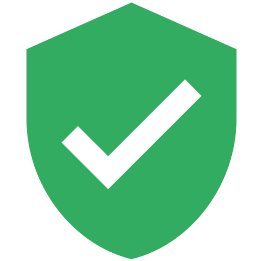
The REACH Regulation and RoHS Directive restrict the usage of various substances. There is also some overlap in terms of the substances covered by RoHS and REACH, which can create some confusion. However, they differ in terms of product scope, substance restrictions, and labelling requirements.
In this guide, we explain and summarise what some of those differences are. We also include examples of restricted substances for both regulation, and the respective limits.
Content Overview

FREE CONSULTATION CALL (30 MIN)
 Ask questions about compliance requirements
Ask questions about compliance requirements Countries/markets:
Countries/markets:
 Learn how we can help your business
Learn how we can help your business
You will speak with:Ivan Malloci or John Vinod Khiatani
Product scope
While both regulations restrict the usage of different substances in products, the RoHS Directive has a narrower scope, as it only covers electronics.
REACH
REACH regulates harmful and hazardous substances in substances and articles that might contain such substances. It requires importers and manufacturers to ensure their products are safe for human health and the environment.
Generally speaking, REACH applies to all chemicals, including chemicals used in articles. This means that, in practice, it covers all products even if certain products (e.g. food) are exempted from some of its provisions. Here we just list some examples of covered products:
- Childcare articles
- Clothing
- Jewellery
- Footwear
- Toys
- Furniture
- Paints and coatings
- Plastics
- Metals and alloys
- Ceramics
It might also cover other categories of products, such as some types of equipment and machinery.
RoHS
The RoHS Directive restricts the usage of several hazardous substances in electronic and electrical equipment (EEE).
Annex I lists categories of EEE that are covered by the directive, which includes the following:
- Large and small household appliances
- IT and telecommunications equipment
- Consumer equipment
- Lighting equipment
- Tools
- Toys
- Leisure and sports products
- Medical devices
- Control instruments
- Automatic dispensers
Note that the Annex specifies that EEE that doesn’t belong any listed category is also covered by the directive.
Article 2 lists several types of equipment exempted from the RoHS. Here are some examples:
- Equipment designed to be sent to space
- Active implantable medical devices
- Pipe organs
REACH and RoHS comparison
| REACH | RoHS | |
| Product scope | a. Substances
b. Articles |
Electronic and electrical equipment |
| Substances | Restricted substances listed in:
a. SVHC Candidate List b. Annex XVII c. Annex XIV (Authorisation List) |
Restricted substances listed in Annex II |
| Limits | a. Substance restriction limits are generally expressed by weight (e.g. 0.1% for SVHC)
b. In some cases, migration limits might also be specified (e.g. 0.5 μg/cm2/week) |
a. 9 substances are restricted to 0.1% by weight
b. Cadmium is restricted to 0.0.1% by weight |
| Documentation | Only for substances:
a. Technical dossier b. Chemical safety report c. Safety Data Sheet |
a. Technical documentation
b. Declaration of Conformity |
| Labelling | Only for substances:
Might require adherence to the CLP Regulation requirements |
a. CE marking
b. Traceability information |
| Registration | Articles: Submission of info to the SCIP database is required when SVHC has a concentration exceeding 0.1% w/w
Substances: Required when manufactured quantities exceed 1 tonne per year |
None |
Substances
The REACH Regulation restricts a broad number of substances, which can be found in the SVHC Candidate List and Annex XVII. On the other hand, the RoHS directive restricts 10 specific substances.
REACH
While the SVHC Candidate List includes substances that may negatively affect human health and the environment, Annex XVII includes substances that are considered to be more harmful and therefore are severely restricted or even prohibited from use.
SVHC Candidate List
If a substance fulfills criteria such as the following, then ECHA can propose to have it added to the SVHC List:
a. It is carcinogenic, mutagenic, or reprotoxic (CMR) in categories 1A and 1B.
b. It is persistent, bioaccumulative, and toxic (PBT) per Annex XIII of REACH.
c. It can potentially cause endocrine issues.
The SVHC Candidate List contains over 200 substances that are regulated by REACH. Here we list some examples:
- 1,2,3-trichloropropane
- Benzyl butyl phthalate (BBP)
- Cadmium
- Lead
- Pentadecafluorooctanoic acid (PFOA)
Suppliers of articles must notify the ECHA, through the SCIP database, if their products contain SVHCs with concentrations over 0.1% by weight.
Annex XVII
Annex XVII to REACH contains a list of hazardous articles, mixtures, or substances that are restricted or prohibited from use.
Some substances have weekly migration limits, while others are restricted to a certain percentage by weight in certain materials. For instance, the weekly migration limit for nickel in jewelry that directly contacts human skin (e.g., bracelets) is 0.5 μg/cm2/week, while the concentration of cadmium in plastic material is limited to 0.01% by weight. Note that these limits might also vary according to the product category.
The Annex XVII list contains over 70 substances, including:
- Asbestos fibers
- Mercury
- Arsenic compounds
- Nickel and its compounds
- Chloroform
Annex XIV
Annex XIV, which is also known as “Authorisation list”, contains substances selected from the Candidate List. These substances cannot be placed in the market, unless an authorisation is granted, or their use is exempted from authorisation.
RoHS
Annex II of the RoHS directive contains the following 10 restricted substances:
- Lead
- Mercury
- Cadmium
- Hexavalent chromium
- PBB
- PBDE
- DEHP
- BBP
- DBP
- DIBP
We list the respective limits in the next sections.
Substance comparison
In the table below, we compare the restrictions limits set by REACH and RoHS, for the ten substances that are restricted by RoHS. Note that REACH might cover some of these substances both in the Candidate List and Annex XVII.
| Substance | REACH | RoHS |
| Lead | a. Candidate List: 0.1% by weight
b. Annex XVII: 0.05% by weight (e.g., for jewelry, articles that might be placed in the mouth by children) |
0.1% by weight |
| Mercury | Annex XVII: Prohibited for general-sale measuring devices (e.g., barometers, thermometers not for fever use) | 0.1% by weight |
| Cadmium | a. Candidate List: 0.1% by weight
b. Annex XVII: 0.01% by weight (e.g., for plastic materials, paints) |
0.01% by weight |
| Hexavalent chromium | Annex XVII: 0.0002% by dry weight of cement, 0.0003% by dry weight of skin-contacting leather articles | 0.1% by weight |
| PBB | Annex XVII: Prohibited for use in skin-contact textiles (e.g., undergarments, linen) | 0.1% by weight |
| PBDE | Not restrictions found | 0.1% by weight |
| DEHP | a. Candidate List: 0.1% by weight
b. Annex XVII: 0.1% by weight of plasticised material (e.g., in toys and childcare articles) |
0.1% by weight |
| BBP | a. Candidate List: 0.1% by weight
b. Annex XVII: 0.1% by weight of plasticised material (e.g., in toys and childcare articles) |
0.1% by weight |
| DBP | a. Candidate List: 0.1% by weight
b. Annex XVII: 0.1% by weight of plasticised material (e.g., in toys and childcare articles) |
0.1% by weight |
| DIBP | a. Candidate List: 0.1% by weight
b. Annex XVII: 0.1% by weight of plasticised material (e.g., in toys and childcare articles) |
0.1% by weight |
RoHS limits
Annex II of the RoHS directive lists the maximum concentration values tolerated by weight in homogenous materials for the restricted substances.
REACH limits
The REACH Regulation provides substance restriction limits in percentages by weight of the material or product the substance is found in, or in terms of migration limits. Note that the restrictions listed in Annex XVII might apply only to some categories of products.
.
Labelling
Labelling requirements differ between REACH and RoHS. For instance, while REACH might require adherence to the CLP regulation, RoHS requires adherence to CE marking rules.
REACH and CLP
As far as we know, the REACH regulation does not include labelling requirements for articles. However, if you need to register your substance, Article 10 of REACH requires an hazard label as set by the Classification, Labelling and Packaging (CLP) Regulation. In this case, you should include on the label items such as:
- The supplier’s name, address, and phone number
- The nominal quantity of a substance in the product
- Product identifiers
Where applicable, you should also include the following:
- Hazard pictograms
- Signal words
- Hazard statements
- Precautionary statements
- Other relevant information
RoHS
Importers and manufacturers of electronics should label their products with the CE marking. For traceability purposes, their label should also include the following information:
- EEE identification number
- EEE type, batch, or serial number
- Manufacturer’s name and address
























.png)
.png)
.png)


